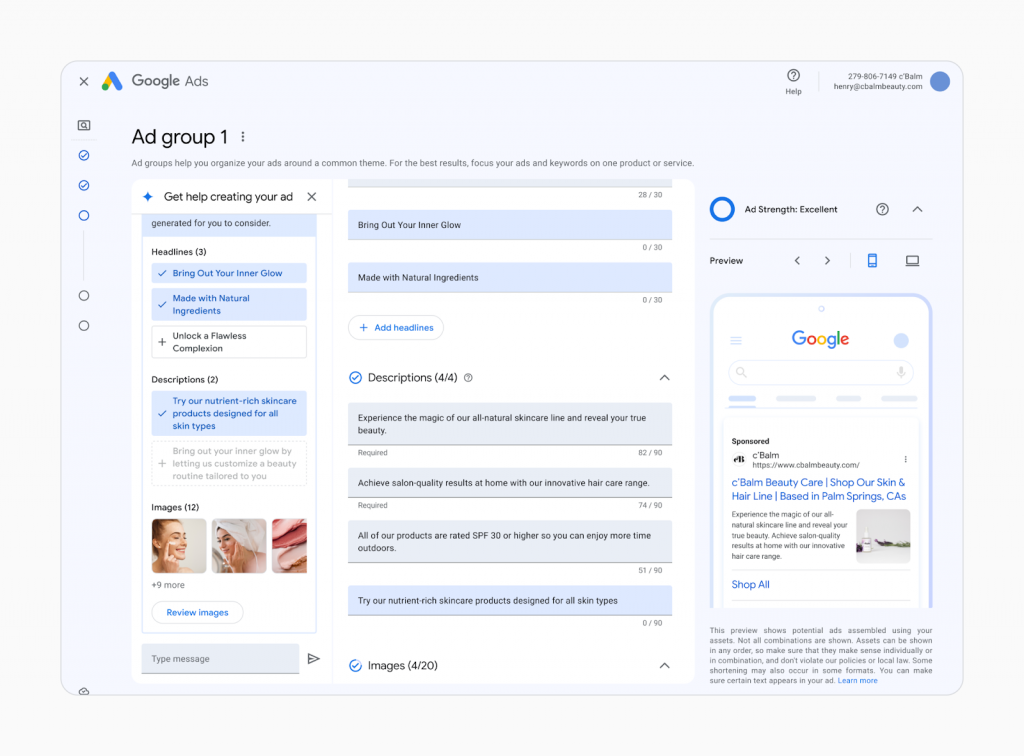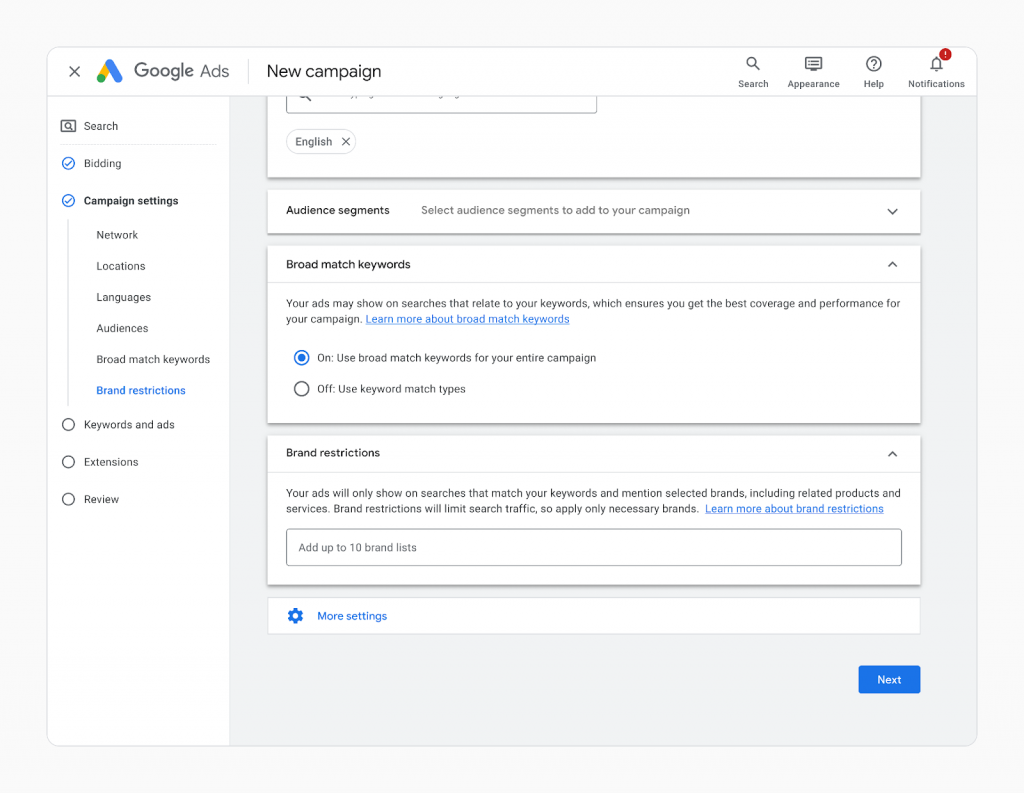There were lots of announcements made at this year’s Google Live event and we know that (sometimes) it can be overwhelming to hear all of the news in one go.
So, we’ve had our Paid Performance experts through all of their notes and highlight the 6 most important announcements, so that we could discuss them with you all here.
1. Improved Insights
Until now the insights tab has been limited in how deep we can dig into the data and how much we can learn from it, with only 2 set date ranges of last 7 or 28 days.
With the updated insights tool, Google is changing this with the ability to choose custom date ranges, download the data and explore historical insights.
On top of the updated PMax insights tab, Google are also bringing us improved product and asset insights.
All of these updates will allow us to better understand what’s driving performance and use that information to understand what customers are looking for, how they’re engaging with our ads and what we can do to keep improving performance.



2. AI-Powered Campaign Workflows
Google Ads is bringing AI to our campaign workflows to help create more engaging assets, ads and campaigns that are relevant to what consumers are searching for.
Soon, we’ll be able to ask Google for suggestions directly in the Google Ads platform when building new ads or campaigns.
From conversational inputs, Google will use AI to suggest keywords and assets including headlines, descriptions and images. These can then be reviewed and edited by our PPC specialists before being published to the campaign, allowing AI to help us but we still get that final input to make sure everything aligns with our client’s tone of voice and message and is relevant to what we’re advertising.
AI isn’t just coming to campaign builds, asset creation in PMax is also integrating AI. Based on a few inputs about the business and product(s) being advertised, Google will provide us with suggested assets pulled from the site and existing assets from previous campaigns.
On top of this, we’ll also be able to describe the creative we want and using AI, generate new assets. Creative can be expensive and time consuming for businesses to create at scale so these tools could potentially help us alleviate some of this workload both for us and our clients.


3. Brand restrictions for broad match
Broad match keywords have become more and more a part of our accounts over recent years but brand campaigns have been one area where we can’t use broad match to its full potential where we want to make sure we’re only showing ads to customers searching for our client’s brand names and not on generic or competitor terms.
This update will allow us to use broad match keywords for brand campaigns, adding brand lists to restrict the search terms the broad match keywords will be eligible to show ads for to only the brands we choose.

4. Updated Customer Acquisition & Retention Goals
New customer acquisition optimisation has been available in Google Ads for a while now but this update takes it one step further. Rather than optimising towards driving any new customers, we’ll be able to optimise towards the new customers who are most likely to drive higher lifetime value and therefore be more valuable to the business in the future.
Later this year, Google will also release a new re-engagement goal, allowing us to optimise campaigns to reach existing customers, driving them to re-engage and continue to buy from our customers.
Using these goals in combination, we’ll be able to run different campaigns working towards different objectives and targets depending on customer status, growing the customer base whilst also improving retention.

5. Custom Performance Max Experiments
With the new PMax experiment setup being rolled out, we’ll be able to A/B test and better understand the full impact of some of the Pmax settings that until now we’ve only been able to measure by observing performance before and after implementation.
Some of the things we’ll be able to test include turning final URL expansion on or off as well as bid strategy objectives and settings.

6. YouTube video view and action campaigns
As part of Google’s new AI-powered video campaigns, video views campaigns have been announced with the objective to drive brand consideration.
This new campaign type will allow us to scale performance across in-stream, in-feed and shorts placements to maximise the views on our ads. According to Google, these drive on average 40% more views than in-stream skippable CPV campaigns, ensuring more people are actually seeing the ads and encouraging consideration.
In addition to this, Google is also launching video action campaigns which will work to drive traffic to site as well as conversions. Similar to the video views campaigns, these will also run across in-stream, in-feed and shorts placements.

So, what do you think of all of the changes coming our way?
We’re, understandably, pretty excited but if you’ve got any questions or concerns about what’s coming, don’t be afraid to reach out and speak to one of our digital marketing specialists today.



